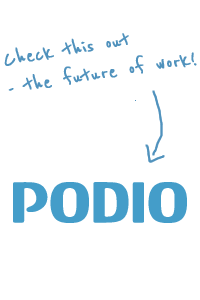Jon Lund points to DR’s latest, Fanstastiske fortællinger, a kind of geo blog with fantastic stories, complete tagging, comments — and a host (Isabella Miehe-Renard) known from traditional media. The site (works a lot better in Firefox than in Safari) also includes a fancy map.
It’s an interesting move, putting DR (again) in the same user-participation group as a few other media companies, including Fyens Stiftidende (xtrablog) and Urban (which we’re working with as I write this).
I like their approach, as they’re not just letting people write whatever, but has tried to provide a theme they think will work well with this kind of interaction and material. Blogging and what have we isn’t the magic pill, but it provides an alternative to the traditional way of working and used appropriately, you can benefit a lot — just as your audience.
But it’s based on the fact, that traditional media and the way the people behind usually understand themselves, is changing; no more ‘content’ in silos, no more “we — and only we are the media”, “no more take it or leave it”, no more “the way we work is a law of nature not up for discussion”.
I had (another) taste of it yesterday when I, as part of Videoblogging Week 2006, wanted to do a vlog story on a friend being interviewed for national tv. There was a nice meta aspect to the story (indie media doing a story about the same length as the story national tv wanted to do — about their story) and a more important point to be made of the fact that, as the tv story was one of those ‘just before the weather report we always do something a little bit different and less challenging’, this will change when everyone and his mother can do just as funny stories in a fraction of the time.
I’ll post notes on the interview later (when I get time to edit the video I shot — and decide on my final angle), but I think it’s fair to say, that while the journalist and the cameraman were decent people doing a story that by no means can cause any uproar, they weren’t too pleased with meeting two people that not only recorded it all but also asked questions back, showed an interest in the reporter’s work, their methods and omnibus media in general.
Following the interview (that went just as planned — just as we expected; despite a prior agreement, the angle the reporter has decided on from the beginning took over) we had a close-to-heated exchange of views, not because we actually disagreed about our individual roles, but because of different opinions about the initial agreement, that I could tape the session. The reporter, I was told, would like to check my video before posting as she in a way represented the network she worked for. She didn’t feel she had said anything compromising (and she didn’t) but she wasn’t used to being taped working.
And here’s the point. When you use people for making stories, they just might feel they represent their line of business, themselves as individuals and their blog/vlog whatever just as much. This not to say that the classic “I feel I wasn’t portrayed loyally ’cause I’m incredibly vain”, that we’ve all felt at some point after being interviewed, should be taken out on this particular journalist, but that
1) Blogs and video blogs do play a part in providing background information that could be useful when doing more ‘important’ stories.
2) You might want to reconsider participating in vox pop-style things at all; if you got something quick to say, say it yourself.
3) Traditional media being the only one with license to ask is so yesterday. We open up, they open up. Whatever they don’t want you to know and publish, they shouldn’t say.
We are the media. Get used to it.

Pingback: Kammeret » Arkiv » Video, video …